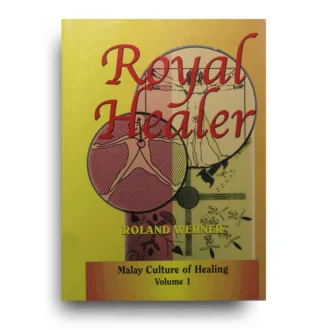The History of the Qur’ānic Text, From Revelation to Compilation: A Comparative Study With the Old and New Testaments provides unique insights into the Qur’anic text’s immaculate preservation as well as exploring many of the accusations leveled against it. The reception of divine revelations, Prophet Muhammad’s role in disseminating and compiling these verses, and the setting of the text’s final external shape, are scientifically examined alongside such topics as the origins of Arabic, the so-called Mushaf of Ibn Mas’ud, and the strict methodology employed in assembling textual fragments.
Attempts to distort Islam and its sacred texts are in fact as old as the religion itself, though the strategy behind these efforts has fluctuated according to the intended goal. Beginning with the rise of Islam and up until the 13th century A.H. (7th-18th century C.E.), the first objective was to establish a protective fence around Christians to counteract the rapid advance of the new faith in Iraq, Syria, Palestine, Egypt, Libya, etc. Among the notables of this period were John of Damascus (35-133 A.H./675-750 C.E.), Peter the Venerable (1084-1156 C.E.), Robert of Ketton, Raymond Lull (1235-1316 C.E.), Martin Luther (1483-1546 C.E.) and Ludovico Marraci (1612-1700 C.E.), their pens dipped in unsophisticated yet wilful ignorance and falsehood. Spurred by the change in political fortunes and the start of colonialism from the 18th century onwards, the second phase of attack witnessed a shill in posture from defensive to offensive, aspiring to the mass conversion of Muslims or, at the least, of shattering any pride and resistance that emanated from their belief in Allāh.
Abraham Geiger (1810-1874) belongs squarely to this second period; his 1833 dissertation, Was hat Mohammed aus den Judentum aufgenommen? (“What did Mohammed take from Judaism?”), inaugurated the search for ulterior influences on the Qur’ān and lead to innumerable books and articles aimed at branding it a poor Biblical counterfeit, replete with mistakes. This book will bring to light other names that have spearheaded this second phase, including Nöldeke (1836-1930), Coldziher (1850-1921), Hurgronje (1857-1936), Bergsträsser (1886-1933), Tisdall (1859-1928), Jeffery (d. 1952) and Schacht (1902-1969).
A third phase, beginning in the mid 20th century on the heels of the founding of Israel, has actively sought to purge all vents that cast an unfavorable light on Jews. Among the followers of this school are Rippin, Crone, Power, Calder, and not least or all Wansbrough, whose theory; that the Qur’ān and Ḥadīth are a community products spanning two centuries which were then fictitiously attributed to an Arabian prophet based on Jewish prototypes, is doubtlessly the most radical approach to ousting the Qur’ān from its hallowed status. The previous decades have witnessed a quickened maturation of these last two phases, swelling in multi-faceted ways; a fairly recent scheme for assailing the Qur’ān has been its reduction to a cultural text, one which is a by-product of a particular era and is therefore obsolete, rather than a Book that is meant for all nations at all times.
Let us suppose for the sake of argument that the findings are indeed true; what then is our response? Here we face three questions: (a) What is the Qur’ān?, (b) If any complete or partial manuscripts are uncovered at present or in the future, claiming to be Qur’ān but differing from what we now have in our hands, what impact would this have on the Qur’ānic text?, (c) Finally, who is entitled to be an authority on the Qur’ān? Or in general terms, to write about Islam and all its religious and historical facets?
These will be pondered over the course of this work to reveal not only the following answers but also the logic which stipulates them: (a) The Qur’ān is the very Word of Allah, His final message to all humanity revealed to His final messenger Muhammad and transcending all limitations of time and space. It is preserved in its original tongue without any amendments, additions, or deletions. (b) There will never be a discovery of a Qur’ān, fragmented or whole, which differs from the consensus text circulating throughout the world. If it does differ then it cannot be regarded as Qur’ān, because one of the foremost conditions for accepting anything as such is that it conforms to the text used in ‘Uthmān’s Muṣḥaf. (c) Certainly, anyone can write on Islam, but only a devout Muslim has the legitimate prerogative to write on Islamic and its related subjects. Some may consider this biased, but then who is not? Non-followers cannot claim neutrality, for their writings swerve depending on whether Islam’s tenets agree or disagree with their personal beliefs, and so any attempts at interpretation from Christians, Jews, atheists, or non-practicing Muslims must be unequivocally discarded.
The author may add that if any proffered viewpoint clashes with the Prophet’s own guidelines, either explicitly or otherwise, it becomes objectionable; in this light, even the writings of a devout Muslim may be rejected if they lack merit. Some may argue that Muslims do not have any sound arguments with which to counteract non-Muslim scholarship, that for them the case is based entirely on faith and not on reason. the author will therefore bring forward his arguments against their findings in The History of the Qur’ānic Text, From Revelation to Compilation: A Comparative Study With the Old and New Testaments.











Reviews
There are no reviews yet